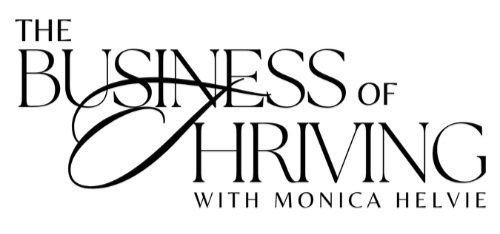Is It Just Stress or Are You Burned Out? 5 Warning Signs You Shouldn’t Ignore
Most of us know what stress feels like—the mounting tension, endless responsibilities, and the promise of rest always just out of reach.
But burnout is something deeper. It lingers longer, feels heavier, and slowly erodes your sense of well-being.
Burnout rarely announces itself with urgency. Instead, it creeps in quietly, disguised as the rhythm of daily life.
It doesn’t always look like a breakdown. More often, it’s a gradual dimming of energy, motivation, and joy. You might find yourself moving through the day on autopilot—doing all the “right” things, yet feeling emotionally flat.
Here are five subtle signs of burnout that often go unnoticed—but deserve your attention.
1. You’re Getting Things Done—But You Feel Numb Inside
From the outside, things look fine. You’re staying productive, meeting deadlines, and showing up for others. But inside, there’s a sense of emptiness or detachment. That spark you used to feel? It feels far away.
This emotional flatness isn’t just exhaustion—it’s depletion. It’s a sign your nervous system is running on empty. You’re functioning, but not thriving.
When fulfillment fades, it’s worth asking: Am I truly living, or just functioning?
💡 Burnout recovery coaching can help you reconnect to a sense of purpose and rebuild from the inside out.
2. You’re Snapping at Small Things—And Surprising Yourself
Little things set you off—traffic, emails, even your partner asking, “What’s for dinner?” Your reactions feel disproportionate, even to you. You’re irritated, and you’re not sure why.
This heightened sensitivity is your nervous system waving a red flag.
When your system is burning out, the fight-or-flight alarm is constantly on. Your brain has less space to process stress, so everything feels heavier than it is.
Burnout reduces your emotional bandwidth, making it harder to regulate your responses. Instead of criticizing yourself, try to notice your reactions with compassion. They’re often clues that your emotional capacity is running low and needs care.
3. Your Body Feels Off—But You Can’t Explain Why
Fatigue that sleep doesn’t fix. Tightness in your jaw or shoulders. Digestive issues or recurring headaches.
These physical signals often show up before you realize something deeper is going on. Burnout doesn’t just live in your mind—it shows up in your body (and your relationships), too.
Often, your body knows something’s wrong before your thoughts can name it.
Listening to these signs with curiosity—not panic or judgment—is a powerful first step toward healing.
4. You’re Pulling Away from People You Care About
You’re canceling plans. You’ve stopped replying to texts. Conversations that used to energize you now feel draining.
This isn’t about being antisocial—it’s emotional burnout in disguise. Even when you love someone, connection can feel like too much when your inner reserves are empty.
Recognizing this helps you offer yourself grace. Replenishment often begins with solitude and rest—not guilt.
5. You Can’t Think Straight
Your mind feels foggy. You reread the same sentence three times. Tasks take longer. You forget details. Making decisions feels harder than it should.
This mental haze isn’t about laziness or a focus problem—and it doesn’t automatically mean you have ADHD. It’s a sign of deep fatigue.
Cognitive clarity depends on rest and emotional regulation. When that balance is off, your brain goes into survival mode and starts conserving energy however it can.
Pushing through won’t help. Giving yourself permission to pause will.
Burnout vs. Stress: What’s the Difference?
Understanding the difference can guide your next steps:
Stress often has a clear cause and an endpoint. Burnout builds slowly when stress becomes chronic, unacknowledged, or minimized.
It’s not just about being busy—it’s about being overwhelmed without meaningful relief.
How Burnout Recovery Coaching Can Help
Burnout recovery doesn’t mean quitting everything or changing your whole life overnight. It means learning how to care for your nervous system, protect your energy, and reconnect with what truly matters.
Here are some gentle starting points:
✅ Make rest a priority, not a reward. You don’t need to “earn” it. It’s essential to your well-being.
✅ Protect your energy with boundaries. Saying no can be an act of self-respect—not selfishness.
✅ Realign with your values. Does your time reflect what matters most? Even small shifts can have a big impact.
✅ Reach out when you’re ready. Whether it’s a friend, therapist, or burnout recovery coach, sharing your experience lightens the weight.
✅ Give yourself time. Recovery isn’t linear. Some days you'll feel progress; others, you'll feel stuck. Both are part of the process. Aim for 1% improvements—and celebrate the small wins.
You’re Not Broken—You’re Burned Out
Burnout doesn’t mean you’re weak or broken. It means you’ve been strong for too long without enough support.
When you begin tuning into your needs with care and honesty, healing becomes possible.
You don’t have to settle for a life that’s just manageable. You deserve one that feels whole, grounded, and meaningful.
If you're ready to feel like yourself again, I offer a free consultation to explore whether burnout recovery coaching is the right next step.
✨Book your free consultation here ✨ Monica specializes in helping dedicated and ambitious professionals navigate high-pressure careers while breaking free from burnout by addressing the deep-rooted patterns and beliefs that drive chronic stress. Trained and certified in multiple trauma-informed modalities—including EMDR, Somatic Therapy, Polyvagal Theory, and TF-CBT—she integrates neuroscience and nervous system regulation into her approach. In 2023, she launched Business of Thriving to provide burnout recovery coaching, group programs, and workshops that equip professionals with the tools to build sustainable success.
While advocating for systemic change in the mental health field, Monica’s work focuses on helping individuals dismantle the internal beliefs and patterns that keep them operating within toxic systems—so they can lead the way in creating real, lasting change.















